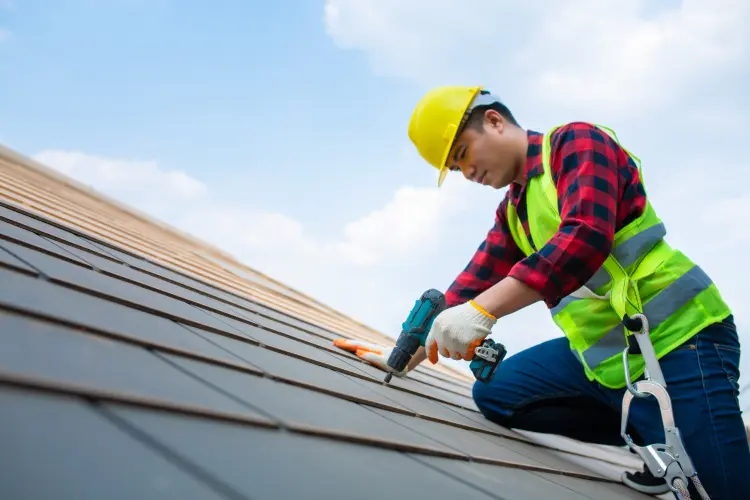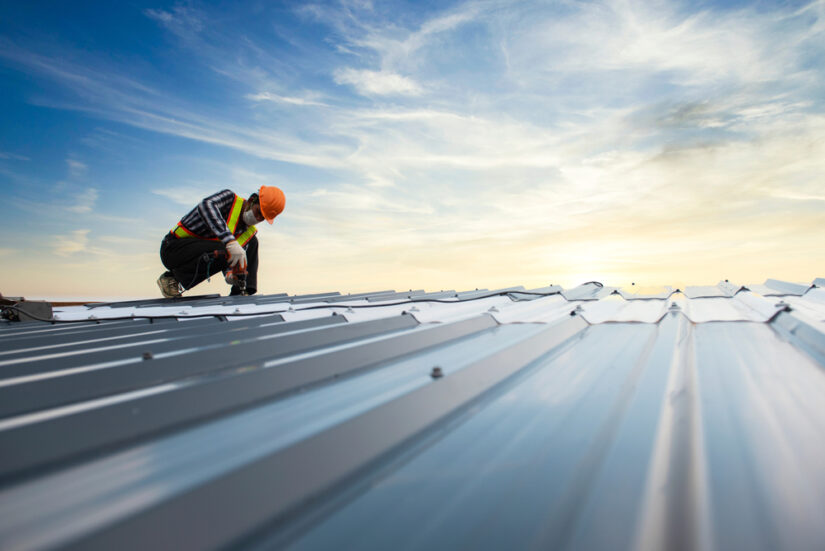Fast and Affordable Cuyahoga Falls Roof Repairs for Quick Fixes and Solutions
A Comprehensive Overview to Effective Roofing Apartment Roof Installation
The details of flat roof covering setup need a precise approach, beginning with a comprehensive understanding of different level roofing system kinds and the crucial products required for ideal performance. A successful installment hinges not just on the selection of materials yet also on the preparation and implementation of each step included in the procedure.
Understanding Flat Roof Covering Types
When considering flat roofings, it is crucial to understand the different types offered, as each deals distinctive benefits and disadvantages tailored to specific needs. The most common types of level roofings include Built-Up Roof covering (BUR), Customized Bitumen, and Single-Ply membranes.
Built-Up Roofing contains multiple layers of asphalt and gravel, providing exceptional resilience and weather condition resistance. It is especially helpful in locations vulnerable to extreme weather however may require even more upkeep as a result of its complicated building.
Customized Bitumen is a popular selection for its convenience of setup and versatility. It typically employs a self-adhesive or torch-applied method, which can be useful for quick fixings and long-term efficiency. Its life expectancy can be shorter contrasted to BUR.
Single-Ply membrane layers, including Thermoplastic Olefin (TPO) and Ethylene Propylene Diene Monomer (EPDM), are identified for their light-weight nature and energy performance. These materials are frequently favored for industrial buildings as a result of their cost-effectiveness and simplicity of installation (Cleveland Roofing Specialists). They might not supply the same degree of insulation as other alternatives.
Each roofing kind requires mindful consideration based upon climate, budget plan, and specific project needs.
Vital Products for Flat Roof Covering
A variety of crucial materials are critical for the successful installment of flat roof systems. The selection of materials straight influences sturdiness, efficiency, and overall performance.
One of the main products is the roof covering membrane, which can be created from various compounds such as polycarbonate polyolefin (TPO), ethylene propylene diene monomer (EPDM), or PVC. Each type provides special benefits, including UV resistance and versatility, which are crucial for prolonged performance.
Along with the membrane layer, insulation products play a considerable duty in energy effectiveness. Inflexible foam boards or polyisocyanurate insulation are preferred choices, as they offer superb thermal resistance and moisture management.
Moreover, roof covering adhesives and sealers are important for making sure a water tight installation. These products must be compatible with the selected membrane to stop damage over time.
Preparing for Installation
Appropriate preparation is necessary for a successful flat roof installation, as it lays the foundation for a long lasting and efficient roof covering system. Begin by carrying out an extensive evaluation of the existing roofing structure.
Following, gather all necessary devices and materials, ensuring that they fulfill industry criteria. This includes waterproof membrane layers, insulation, flashing, and bolts. Familiarize on your own with the producer's requirements, as adherence to these guidelines is essential for service warranty functions.
Additionally, make certain that the workplace is clear of particles and obstructions to assist in safe and reliable installation. Think about climate condition; avoid setup throughout heavy rainfall or severe temperatures, which can impact product efficiency. Inform any type of passengers of the structure about the future job to ensure security and decrease disruptions. By taking these preparatory steps, you can improve the chance my link of a successful level roof covering installation that satisfies both architectural and visual requirements.
Step-by-Step Installment Refine
With the groundwork established through comprehensive preparation, the following stage includes performing the flat roof covering installment systematically. This step is crucial for keeping the roofing's integrity over time.
Following the vapor barrier installment, lay down insulation boards, ensuring they fit snugly together to decrease thermal bridging. Protect the insulation with appropriate bolts based on the roof type and neighborhood building codes - Cleveland Roofing Specialists.
Set up blinking around boundaries, vents, and any type of roofing infiltrations to boost waterproofing. After installment, conduct a comprehensive assessment to recognize any kind of possible concerns prior to wrapping up the job, making certain a durable and trusted level roof covering system.
Upkeep Tips for Long Life
Normal upkeep is necessary to make certain the long life and efficiency of a flat roofing system. One of the primary jobs is to perform regular assessments a minimum of two times a year, preferably in spring and fall. During these inspections, look for signs of wear, such as blisters, splits, or pooling water, which can show underlying problems.

Making certain proper drainage is critical to stop water build-up. Examine and clear seamless gutters, downspouts, and scuppers to guarantee unobstructed water circulation. Additionally, inspect seals around vents, skylights, and other infiltrations for any kind of indicators of deterioration, applying caulk or sealant as needed to maintain a watertight barrier.
Lastly, think about expert maintenance services every few years for extensive examinations and fixings. By try these out sticking to these upkeep pointers, you can dramatically expand the life of your level roof covering, guaranteeing it continues to be a trusted guard versus the components.
Final Thought
Reliable flat roof covering setup demands a systematic strategy encompassing detailed evaluations, product selection, and careful prep work. Adhering to the detailed actions during the setup procedure ensures the appropriate application of roof covering membranes and insulation while improving waterproofing via effective flashing setup.
The details of flat roofing system installment demand a precise technique, starting with a comprehensive understanding of different level roof covering types and the important products needed for optimum efficiency.Proper preparation is vital for an effective flat roof setup, as it lays the groundwork for a long lasting and reliable roofing system. After installation, carry out a complete examination to recognize any kind of potential issues prior to concluding the project, ensuring a robust and reliable flat roof system.
